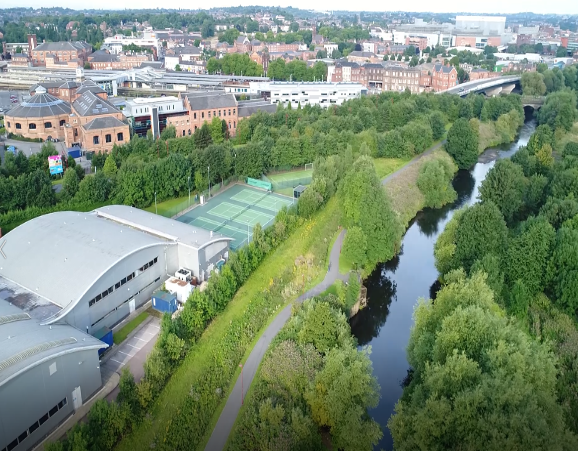Microplastics in Rivers
The Derby and Sandiacre Canal Trust is local charity which aims to restore the original canal into Derby and regenerate Derby by introducing waterside visitor attractions. The project is widely supported by business leaders across the city because they see the introduction of a waterfront in Derby as being critical to the success of the city’s regeneration; as well preserving and extending green spaces across the city and the surrounding area.
Rolls-Royce has been supporting the project for several years; one of the key ways it has been doing this has been through its community projects scheme. As part of their development, Rolls-Royce trainees take part in a community project in their early years in the company. This is the third year where Rolls-Royce trainees have conducted a project with the Derby and Sandiacre Canal Trust.
This year it’s a three way collaboration between the University of Derby the Derby and Sandiacre Canal Trust and Rolls-Royce. This year’s team has been set the challenge of coming up with a concept for a new technology which will remove plastics from the river Derwent.
Current Research
Professor Michael Sweet is head of the Aquatic Research Facility at the University of Derby’s Centre for Environmental Sustainability Research. He is the scientific consultant for this project. Much of the recent research into the effects of plastics on the environment has quite rightly focused on the marine life but some of that plastic will inevitably have travelled through river systems to get to the sea in the first place. Studies conducted by UK Universities have identified microscopic plastics in the rivers in some parts of the country. More work needs to be done to fully understand the extent of this problem in the UK, but it’s inevitable that most rivers will have some plastic in the water especially rivers that flow through urban areas. The plastic comes from a variety of sources but quite often the smaller plastics particles in rivers will have come from larger “macro-plastics” which have broken down in the river itself. The original plastic litter may have been blown or dropped into the river further upstream but as it breaks down it can produce particles with a range of sizes which can behave quite differently, some settle on the river bed or the river bank, some will get stuck in vegetation and others will make it to the sea. Wherever they end up they can have an adverse impact on aquatic life.
Collaborative Working
What makes this project somewhat unique is that we have scientists working together with engineers to tackle this issue. We’re asking these Rolls-Royce trainees to apply their knowledge and innovation to help solve the problem as an engineering challenge. As far as we know this sort of collaboration hasn’t been attempted before in relation to the removal of plastics in rivers. The challenge which the Derby Canal Trust have set for the Rolls-Royce trainees has been deliberately left quite broad so that the team can be as creative as possible.
They will have to take into consideration the mathematics of how particles of different sizes travel down the river and how the speed and flow of the river determines where the plastic contamination ends up to create a successful design. In addition there are other factors to take into consideration such as making sure that any technology would not restrict the flow of the river and increase the flood risk.

